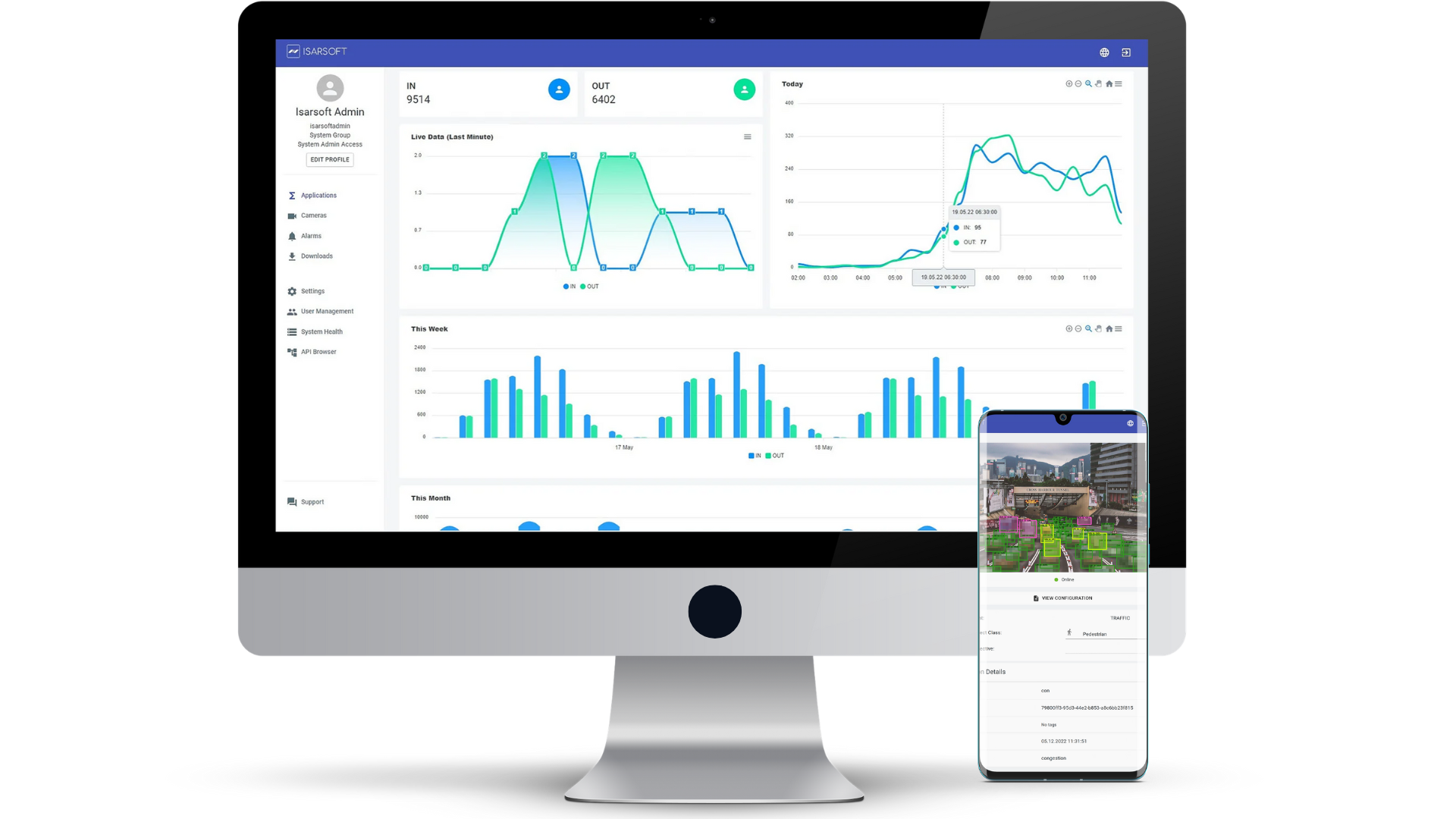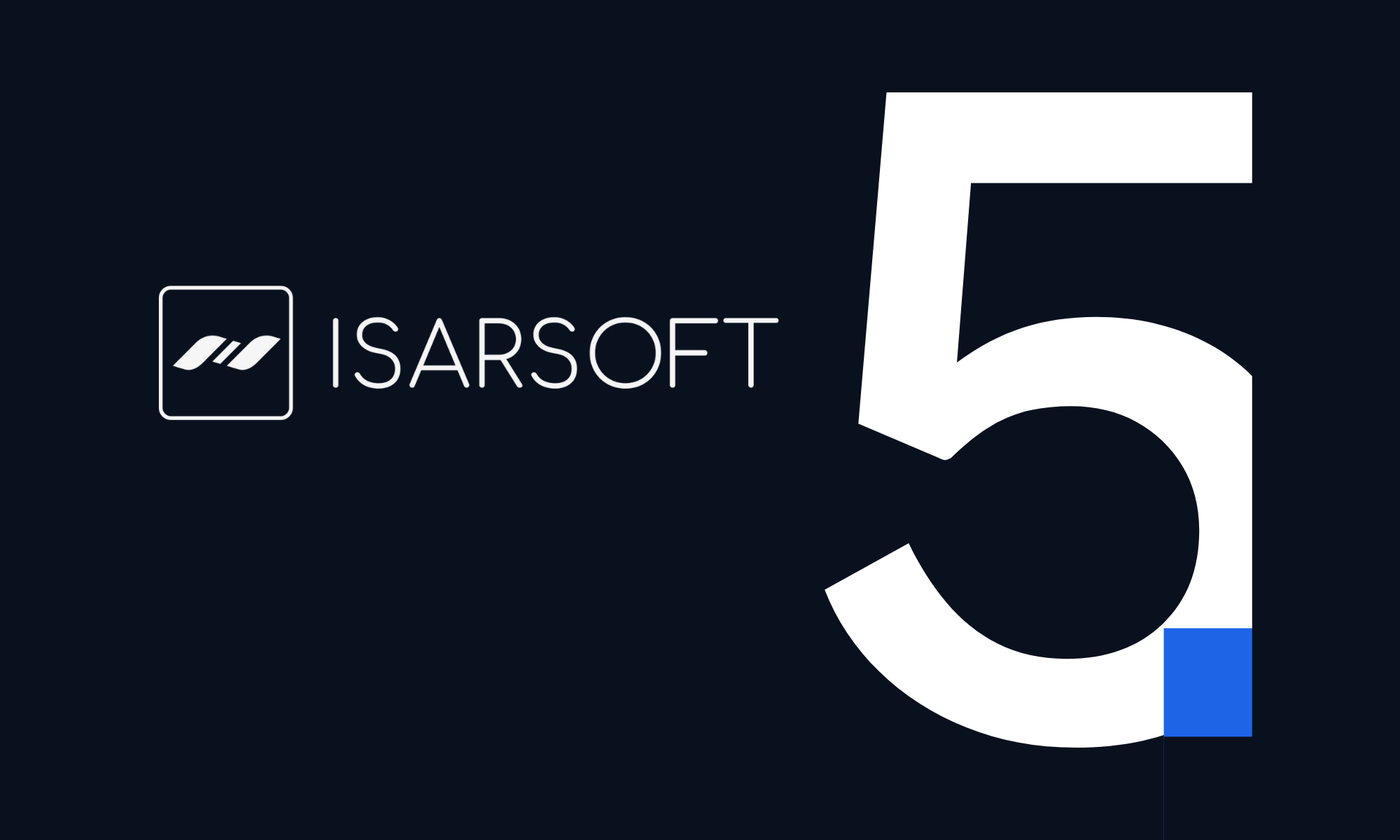AI in Video Surveillance
Access relevant insights into the scope of AI in video surveillance, and learn more about many applications, techniques, and benefits that AI has made possible in the world of video surveillance and analytics.
Published
September 19, 2023

Introduction
The Role of Video Surveillance
Video surveillance refers to the process of using video cameras to monitor a situation, scene, or event. A video surveillance system is made out of different components which include security cameras, monitors or display screens, and sensors.
Video surveillance has quickly become an integral part of business operations, owing to the fact that it allows personnel and planners to keep track of events as they unfold. Modern technology has made it possible for this to occur in real time, thereby ensuring the response times are reduced.
This is where AI comes in: you might be thinking about the functions of AI in the domain of video surveillance, and how it can be used to leverage what we already have. Look no further - for in this article, we take a closer look at AI’s importance in video surveillance, benefits and impact, and how it has evolved over the years.
How has Video Surveillance evolved?
Previously, video surveillance systems were subject to physical restrictions - often meaning that the system had to be set up and monitored on-site. This has been changed by Video Surveillance as a Service (VSaaS), which is a cloud-based system that enables security operators to remotely monitor multiple premises using cameras which send video to a central cloud storage over the internet.
Understanding AI in Video Surveillance
What is AI in video surveillance?
AI’s use in video surveillance focuses on specific software programs that can be loaded onto devices. These programs are then used to analyze image, audio, and video to identify and detect people, vehicles, objects, specially configured behavior, etc.
.jpg)
The core basis of AI comes from computer vision. Computer vision describes an algorithmic process wherein a given object is compared to thousands of reference images, as part of a flowchart-like process. AI is tasked with deciphering if the given object has any points of commonality with the reference images - height, color, shape, etc.
Recent Advancements
One of the primary benefits of AI is that it is self-learning. Meaning that once trained, it is capable of performing analyses quicker, more efficiently, and with greater rates of accuracy.
A recent development in the context of AI used for video analysis is through the introduction of behavioral analysis - a form of non-rule-based AI that is completely self-taught. What this means is that there is no requirement of initial programming by the user. The AI teaches itself to understand behavioral patterns in people, objects, vehicles, and events based on its own observations and through the weighing of characteristics such as speed, color, etc.
Another noteworthy feature would be the application of AI onto edge devices, as Isarsoft Perception does, enabling results like quicker collection, processing, and analysis of video streams.

Edge AI in video analytics is a way of deploying AI functionality to edge devices. It is decentralized, unlike in cloud servers, and reduces high usage of bandwidths.
With AI, video surveillance has been catapulted into business intelligence.
Applications of AI in Video Surveillance
Security and Public Safety
AI-based video surveillance plays a large role in guaranteeing better standards in security and public safety. AI algorithms are designed to monitor video streams in real time, ensuring increased accuracy and reliability. A real-time analysis also allows personnel to respond to safety-critical situations in a speedy manner.
AI can also be used for anomaly detection purposes - that is, by training the AI system to recognize certain situations or triggers as anomalies (abnormal behavior). This perpetuates risk reduction by using an automated system to detect suspicious events such as unauthorized access, unattended luggage, etc.

Another use of AI to enhance safety norms is through crowd management. Factors such as crowd density, dwell time, speed of detected objects, and trajectory maps can be used to better regulate people flow and make sure that assistance is available if and when the eventuality arises. Crowd monitoring helps prevent overcrowding and the adverse effects of it - stampedes, theft or harassment, panic/heath-related incidents, etc.
AI can be used to strengthen the reliability of motion alarms, by sidestepping potential false alarms and unreliable data analysis.
Traffic Monitoring and Management
Excerpt from our article on AI in Traffic (read the full article here):
Real-time Traffic Monitoring and Analysis
This category deals with AI-based methods that can be used to monitor and analyze traffic flow in real time.
- Traffic flow prediction - AI models can be designed to run analysis on historical and real-time traffic data. This is done in order to consolidate the data and use it to understand patterns and trends in traffic flow. Predictive analysis is used by traffic planners to forecast future conditions so that personnel are better able to deal with it effectively in terms of resource allocation, route optimization to minimize traffic congestion, and the adjustment of traffic signal times.
- Incident detection and management - AI-powered systems can be used to identify and detect traffic incidents such as accidents, wrong-way driver detection, overspeeding, or road blockages. Once detected, this information can be used to immediately dispatch personnel to the site and ensure a speedy response. It can also be used to hasten supplementary actions such as rerouting traffic from the area.
- Adaptive traffic signal control - Traditional traffic signal systems are programmed to operate on fixed schedules, proving inefficient in unanticipated scenarios and causing inefficient traffic flow. Adaptive traffic signals are deployed to align with shifts in demand. These signals can identify peak demand conditions and adjust their timings accordingly. This helps in optimizing traffic flow and reduces congestion by placing priority on high-traffic roads.
As with AI being used to reinforce and make more effective security functions such as anomaly detection and motion alarms, the same can be held applicable for traffic functions such as license plate recognition. License plate recognition has been around a while, evolving from manual detection into increasingly automated processes.
Automatic License Plate Recognition (ALPR) is an AI-based video analytics process, where the license plates of detected vehicles are automatically deciphered from a video stream.
Intelligent Transport Systems (ITS)
Intelligent Transport Systems are smart means of transportation, wherein traffic conditions such as demand, weather, and accidents are continuously monitored.
- Vehicle-to-everything communication (V2X) - Vehicle-to-everything communication (V2X) refers to the communication between vehicles and any entity that impacts, or may be impacted by, the vehicle. This includes vehicle-to vehicle communication (V2V), vehicle-to-infrastructure communication (V2I), vehicle-to-pedestrians communication (V2P), and vehicle-to-network communication (V2N). These are part of a system that works to improve road safety and traffic conditions. A key enabler of ITS, V2X is linked to several co-existing benefits such as an improved exchange of safety-critical information, the ability for drivers to make more informed decisions, optimization of the performance of a transportation system, and reduced consumption of fuel.
- Connected and autonomous vehicles - Connected and autonomous vehicles are part of V2V, and refer to vehicles that exchange information directly with nearby vehicles. The data shared contains information about speed, position, acceleration, and braking. This is done in order to enable collision and congestion warnings, route optimization, and other advanced applications.
Retail Management
The retail industry offers a vast scope of application for AI to be implemented. Take, for example, an inventory management system that is regulated by AI. This does not just lead to greater efficiency in the context of time and resources, but can also be used to identify and detect theft, unauthorized access, and loss.
Retailers can use AI to improve various aspects of their business. Some examples include enabling a personalized customer and in-store experience, streamlining pricing and promotional strategies based on consumption and demand, and optimizing operations.
AI can also be used by retailers to gather data that highlights customer behavior and attributes such as age demographics, product preferences, respective needs and pain points, etc. The process of gathering this data is referred to as customer intelligence, and is used to perform customer segmentation.
What does this mean, exactly?
Simply speaking, customer segmentation is the process of segmenting or splitting a customer database into groups based on age, gender, buying habits, etc. This allows targeted product placement designed to cater to the different target groups, allowing retailers to get a better idea of which sales strategies are effective, popular products, and how to market in a manner that specifically addresses the different customer groups.

Customer intelligence is, in turn, used by retailers to improve the customer experience (CX) during in-store shopping. There are several ways in which AI aids the improvement of customer journeys - by reducing wait times through efficient queue management, simplifying navigation within the premises through data-based infrastructural elements, and using smart displays to attract and aid customers.
If you're looking for more on AI in retail, head to our article on the same!
Urban Planning & Smart Cities
The core concept of smart cities relies heavily on data-oriented decision making. A city is typically comprised by many simultaneously occurrent systems - road traffic, rail and water-based transportation, infrastructure, parking facilities, etc. In order to effectively coordinate every individual cog, it is essential to have access to consistent, reliable data and be able to perform speedy analysis on it.
With the help of AI and machine learning, large volumes of data can be analysed and used to anticipate future events.
The benefits of a smart city are numerous with the most notable being sustainable and smart transportation networks, an increased number of walkable spaces, improved infrastructure, reduced vehicular emissions, better ways of resource consumption, etc.
The idea behind smart urban planning is to establish equity for all residents of the city in question, in addition to enabling governmental bodies to make decisions that are environment-friendly, sustainable, and future-focused.
Smart cities are all the rage at the moment, and luckily, we have more reading material for you. Read our blog post on smart cities through the lens of video analytics here!
AI-oriented Techniques in Video Surveillance
Video Analytics and Real-Time Monitoring
AI-based systems are used to enable the real-time monitoring of video data, and perform analytics functions such as detection, path and position maps, speed and dwell time measurement, and trajectory mapping. All of these features enhance the understanding of video data, and allow personnel to be hands-on with potential security risks, safety-critical incidents, and general management.
Another benefit is that large volumes of data are collected and summarized to generate relevant insights in a way that is time-efficient and reliable. Through the use of heat maps, for example, users can view large datasets in the form of color-coded maps. This simplifies the identification or relevant KPIs.
Object Detection
Object detection is a process used by video analytics systems to, you guessed it right, identify and detect objects. The use of AI enables categorization based on use case - for examples, vehicles (cars, trucks, vans, bicycles) and pedestrians in a traffic scenario, people in an footfall-heavy site such as a stadium or shopping mall, etc.
By carrying out the detection of objects, users can access figures such as people count and crowd count and better understand the specifics of a situation that is being monitored. This is especially relevant for appropriate action plans. Take, for example, a crowded train station. By having a consistent count of the people within the premise, personnel are able to estimate occupancy, peak demand figures, usage of resources, and deployment of staff.
Facial Recognition
Facial recognition is an AI-oriented feature that can be used to conduct demographic studies in video feeds. Details such as age and gender are mapped, in order to give users an overview of the customer groups that are relevant for various purposes.
Automated Alerts
Automated alerts can be set up through the use of AI in video surveillance by using it to identify specific or predefined criteria in video streams. For example, a person jaywalking or a vehicle crossing a red light can be automatically detected, following which the user is notified. What this does is reinforce security measures and make processes safer and more accessible for all participants alike.
Case Studies
We want our readers to have the chance to better understand the nuances of AI's usage in video surveillance through a selection of carefully chosen case study videos - each highlighting a different aspect and use case - whether in retail, traffic, or general security.
Case 1: Retail
The video above takes place in a retail store. The core objective here is a function of customer intelligence - movement patterns. The reason why retailers measure movement patterns of customers is in order to assess metrics such as time spent in different areas of the store, occupancy rates at different times of the day, and 'hotspots' meaning the areas that attract maximum traffic. Having access to these insights is beneficial to collecting real-time customer information, and then utilizing them to leverage the improvement of the business.
Case 2: Traffic
This video deals with the measurement of traffic at an intersections. Intersections are interesting architectural elements, crucial in terms of regulatory safety, and often susceptible to high congestion if the traffic management is not optimized.
Through this case study, it is easy to understand exactly how AI-based video surveillance impacts traffic analysis and measurement - and how it can be used to ensure safety and accessibility for commuters, vehicles, and pedestrians alike.
Case 3: Public Safety
The last in this list - public safety remains a top concern in a wide variety of use cases and is one of the richest areas of application when it comes to AI-based video surveillance. This video depicts a crowded boardwalk in Atlantic City.
By using AI-based video surveillance, not only can incoming and outgoing crowds be monitored and regulated, personnel can also uncover insights about any infrastructural shortcomings, potential risk factors, and other KPIs imperative to public safety.
More about Isarsoft
With Isarsoft Perception, your camera systems become part of your business intelligence. Whether the goal is to increase efficiency, customer satisfaction or safety, Isarsoft Perception provides the insights needed for informed decisions.

Contact us, to learn more about how to turn security cameras into intelligent sensors.



